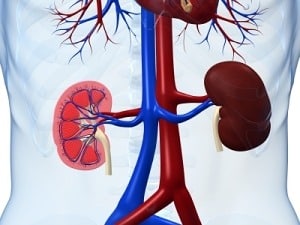Successful peripheral IV catheterization of preterm infants

Peripheral IV catheterization during postnatal stabilization of preterm infants is feasible and successful in most of the cases at first attempt” Baik-Schneditz et al (2017). Abstract: BACKGROUND: Current European Guideline for resuscitation recommends a centrally positioned umbilical venous catheter as the best option for administering necessary drugs. Especially in preterm infants, a frequently used alternative […]
Vascular access-board certified credential reviewed
A significant ratio of individuals holding the vascular access-board certified credential are registered nurses. A large portion of the nursing workforce holds specialty certification, but this process is mainly voluntary and heavily dependent on the motivation of individual nurses” Fitzpatrick (2017). Abstract: Background: Nursing is the largest health care profession in the United States, and […]
An example of professional certification value offered in this article

Cover letters or statements of interest and self-evaluations provide additional opportunities for identifying and sharing candidate attributes. One attribute used in this context is professional certification” Bennett (2017). Abstract: Professional attributes and characteristics are used in position descriptions, job postings, performance evaluations, and role definitions. Many of these descriptors are found on professional resumes or […]
Article presents alternative uses for job analysis results

This article presents alternative uses for job analysis results and strategies for increasing the return on investment for this asset” Waters et al (2017). Abstract: A job analysis is an integral component in the development of a certification examination. A job analysis, also referred to as a role delineation study, is an expensive, resource-intensive endeavor. […]
Amy Bardin-Spencer remembers gaining her vascular access-board certification

I remember the day I sat for my vascular access-board certification (VA-BC) credential. It was December 2010, and I really did not know what to expect” Bardin-Spencer (2017). Abstract: I remember the day I sat for my vascular access-board certification (VA-BC) credential. It was December 2010, and I really did not know what to expect. […]
OPAT bundle has been suggested to improve community IV outcomes

A streamlined transition from inpatient to outpatient care can decrease 30-day readmissions. Outpatient parenteral antibiotic therapy (OPAT) programs have not reduced readmissions; an OPAT bundle has been suggested to improve outcomes. We implemented a transition-of-care (TOC) OPAT bundle and assessed the effects on all-cause, 30-day hospital readmission” Madaline et al (2017). Abstract: BACKGROUND: A streamlined […]
Educational curriculum for short peripheral intravenous catheter insertion
This article describes a collaboration between private industry and a hospital to modify, implement, and evaluate a simulation-based blended PIVC insertion continuing education program for staff nurses” Glover et al (2017). Abstract: Despite peripheral intravenous catheter (PIVC) insertion being a commonly performed skill, practicing nurses may receive little substantive education, training, or opportunities to practice […]
Trial comparing vapocoolant spray versus placebo spray in adults undergoing IV cannulation

Vapocoolant spray significantly decreased peripheral intravenous cannulation pain in adults versus placebo spray and was well tolerated with minor adverse effects that resolved quickly” Mace (2017). Abstract: OBJECTIVES: Painful diagnostic and therapeutic procedures are common in the health care setting. Eliminating, or at least, minimizing the pain associated with various procedures should be a priority. […]
Ultrasound guided vascular access described in this full text article

Ultrasound (US) guidance for intravenous (IV) access has been well documented for more than 20 years and is now routine in many settings for non-emergent central line placement and difficult peripheral IV access” Currie and Huecker (2017). Excerpt: Ultrasound (US) guidance for intravenous (IV) access has been well documented for more than 20 years and […]
Dedicated medical support for paediatric OPAT services
The introduction of a formal medical team to HiTH demonstrated a positive clinical impact on OPAT patients’ outcomes. These findings support the ongoing utility of medical governance in a nurse-led HiTH service” Mace et al (2017). Abstract: OBJECTIVE: Despite the many benefits of paediatric Outpatient Parenteral Antimicrobial Therapy (OPAT) programmes, there are risks associated with […]
Vascular access thrombosis in patients with end-stage renal disease

Patients with end-stage renal disease (ESRD) on maintenance hemodialysis (HD) are at risk for occurrence of vascular access thrombosis and venous thromboembolism (VTE). Understanding the extent of these complications and identifying risk factors can help improve management strategies” Königsbrügge et al (2017). Abstract: BACKGROUND: Patients with end-stage renal disease (ESRD) on maintenance hemodialysis (HD) are […]
Review of daily nocturnal and conventional home hemodialysis
Thus, in this national cohort of HHD patients, those receiving short daily and nocturnal HHD had similar patient/treatment survival compared with patients receiving conventional HHD” Tennankore et al (2017). Abstract: Home hemodialysis (HHD) has many benefits, but less is known about relative outcomes when comparing different home-based hemodialysis modalities. Here, we compare patient and treatment […]
How useful is ultrasound guidance for internal jugular venous access in children?

The aim of this study was to determine whether US reduces number of puncture attempts, procedure time, and complication rate during IJV access in children” Zanolla et al (2017). Abstract: PURPOSE: The aim of this study was to determine whether US reduces number of puncture attempts, procedure time, and complication rate during IJV access in […]
Review of ultrasound for central venous catheter placement
In this review, we describe the rationale for the use of US during CVC placement, the basic principles of this technique, and the current evidence and existing guidelines for its use” Saugel et al (2017). Abstract: The use of ultrasound (US) has been proposed to reduce the number of complications and to increase the safety […]
Use of subcutaneous route for comfort care in neonatal palliative population

In this study, the advantages of subcutaneous analgesic therapy in terms of comfort in neonatal palliative care situations were investigated” Pouvreau et al (2017). Abstract: INTRODUCTION: Subcutaneous hydration (hypodermoclysis) and drug administration is a widely used method of analgesic therapy in adult palliative care medicine. Very little is known about its use in neonatal medicine. […]
Venipuncture procedure affects heart rate variability and chronotropic response

The purpose of this study was to investigate changes of HRV indexes and heart rate (HR) during, and following a venipuncture procedure among healthy individuals” Kliszczewicz et al (2017). Abstract: BACKGROUND: Heart Rate Variability (HRV) has been shown to be influenced by several factors such as noise, sleep status, light, and emotional arousal; however, little […]
How to use chlorhexidine in a neonatal intensive care unit

One area of ongoing confusion for many clinicians is whether to adhere to the manufacturer’s recommendations that CHG remain on the skin following the procedure to promote persistent microbicidal effects, or to foster product removal in hopes of preventing skin-related complications” Delong Pettit and Li Sharpe (2017). Abstract: Background: Neonates are at greater risk for […]
Impact of nursing specialty certification and patient outcomes

To discuss the current research evidence about the relationship of nursing specialty certification and patient outcomes in acute care hospitals, interpret research findings within Needleman’s Expanded Conceptual Model for Credentialing Research, provide future direction for research using Needleman’s model, and discuss how Needleman’s model applies to vascular access certification” Boyle (2017). Abstract: Purpose: To discuss […]
30 years of infusion safety with Paul Lee
Paul Lee is a medical devices training manager with decades worth of experience in clinical engineering. Until August 2017, Paul has been seconded to NHS Improvement in London to work as its patient safety lead for medical devices. I caught up with Paul whilst he was presenting at a IV conference at City Hospitals Sunderland. Despite […]
Peripherally Inserted Central Catheter insertion in conjoined twins
Patients were referred for peripherally inserted central catheter insertion before separation surgery. Simultaneous procedures by two operators were performed to minimize radiation exposure to the patients” Aldulaigan et al (2017). Abstract: The present case describes 7-month-old conjoined thoraco-omphalopagus twins sharing the pericardium and liver who had congenital heart defects. Computed tomographic angiography during simultaneous intravenous […]
Prevention of central venous catheter-associated thrombosis in adults on home parenteral nutrition
Methods to reduce central venous catheter infection are well recognised; however, the prevention of line thrombosis is less well studied” Macdougall et al (2017). Abstract: BACKGROUND: Maintaining central access is imperative for the delivery of home parenteral nutrition (HPN) in those with intestinal failure. Methods to reduce central venous catheter infection are well recognised; however, […]
70% Ethanol for decontamination of central venous catheters

The primary objective of the study was to estimate the effectiveness of 70% ethanol locks for decontaminating CVLs exposed to tacrolimus” Copacia et al (2017). Abstract: BACKGROUND: Tacrolimus, commonly used for graft versus host disease prophylaxis is usually administered via a dedicated central venous line (CVL) and trough levels drawn from the unexposed lumen. Being […]
Thrombosis in adult patients with acute leukemia

This review focuses on mechanisms underlying thrombosis in acute leukemia and discusses recent literature data” Del Principe et al (2017). Abstract: PURPOSE OF REVIEW: Recent studies indicate that the risk of thrombosis in hematologic patients may be similar or even higher than that found in patients with solid tumors. However, available information about pathogenesis and […]
Central venous catheter-related thrombosis in intensive care patients

The primary aim of this study was to establish the incidence rate and risk factors for the development of CR-DVT in our critically ill adult patients” Hrdy et al (2017). Abstract; BACKGROUND: One of the complications associated with central venous catheter (CVC) placement is catheter related deep vein thrombosis (CR-DVT). However a literature search revealed […]
Adherence to standard medication infusion concentrations in paediatric intensive care

The use of standard concentrations and short infusions in PICU using DERS is feasible & achievable as demonstrated by high compliance, and does not have a negative impact on patient outcome, especially fluid balance” Cree et al (2017). Abstract: AIM: To review compliance with the DERS, and to evaluate the impact on daily fluid balances […]
Hemolysis rates in the emergency department with the BD Vacutainer® Barricor tube

The end-point of this being that in the ED a higher than normal percentage of test results are analytically less reliable or withheld from the ED doctors due to poor specimen quality, thereby in some cases delaying the adequate work-up of patients. One important culprit in this is the combined use of intravenous (IV) cannulas […]
What is the risk of liver injury associated with flucloxacillin?

To assess the relative and absolute risks of liver injury following exposure to flucloxacillin and identify subgroups at potentially increased risk” Wing et al (2017). Abstract: Background: Flucloxacillin is an established cause of liver injury. Despite this, there are a lack of published data on both the strength of association after adjusting for potential confounders, […]
Nurses’ adherence to a central line maintenance care checklist
Adherence to evidence-based central line maintenance practices remains a challenge, particularly in complex patient populations” Sabo et al (2017). Abstract: Adherence to evidence-based central line maintenance practices remains a challenge, particularly in complex patient populations. Using an evidence-based observational checklist, areas of nonadherence were identified and a focused educational intervention was developed, resulting in improved […]
Confirming central venous catheter position in neonates

To establish how neonatal units in England and Wales currently confirm longline tip position, immediately after insertion of a longline” Arunoday and Zipitis (2017). Abstract: AIM: To establish how neonatal units in England and Wales currently confirm longline tip position, immediately after insertion of a longline. [ctt link=”a7VlZ” template=”1″]ReTweet if useful… Confirming central venous catheter […]
Central catheter removal versus guidewire exchange in response to CLABSI

However, guidewire catheter exchange saves veins for future access, reduces the cost and number of procedures, and avoids complications of new venipuncture” Saleh et al (2017). Abstract: BACKGROUND: Long-term (tunneled cuffed) hemodialysis catheters are frequently used vascular access in renal failure patients. Catheter-related bloodstream infection (CRBSI) is a common complication of long-term hemodialysis catheters, with […]

